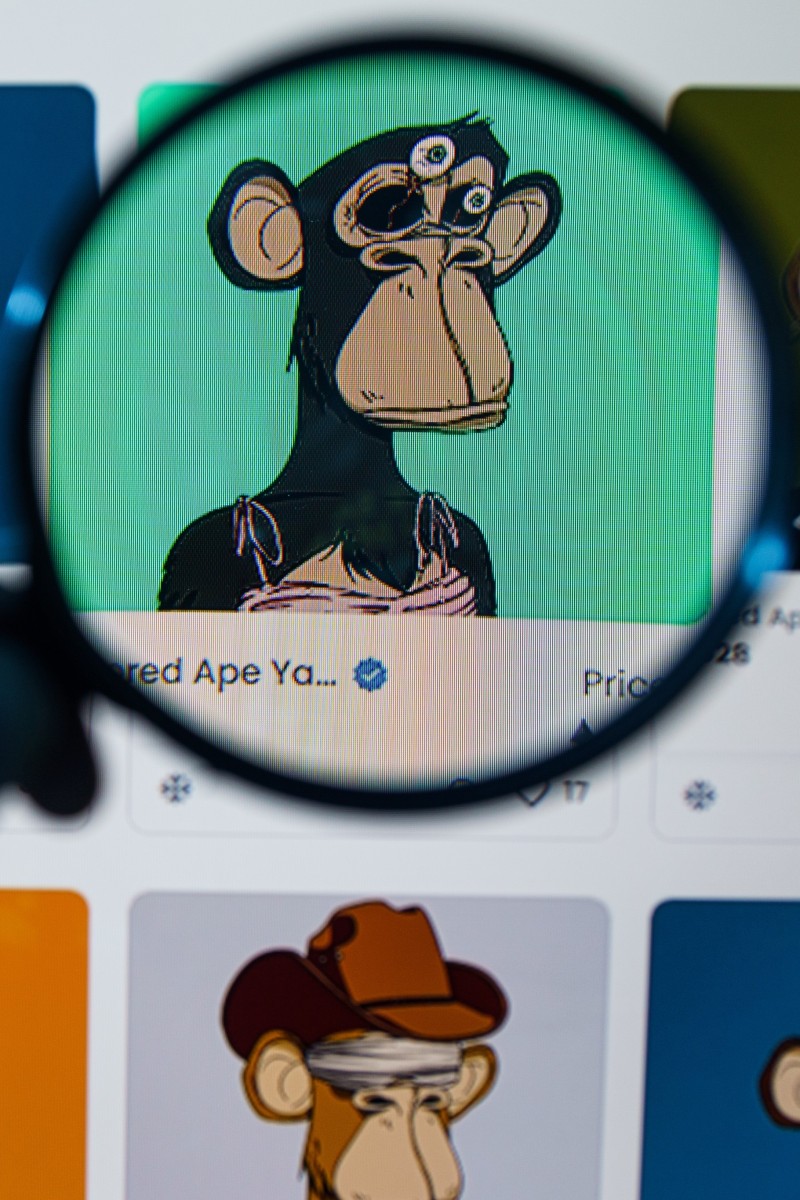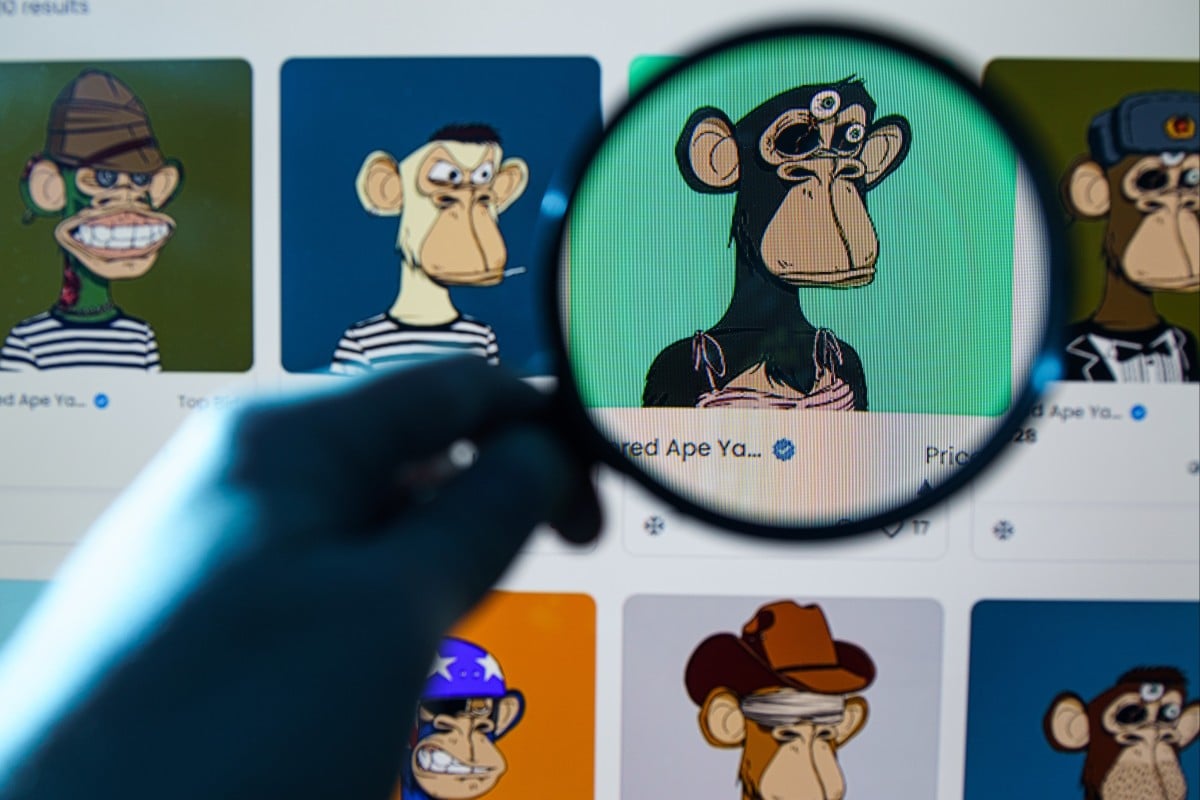
- Each week, two of our readers debate a hot topic in a showdown that does not necessarily reflect their personal viewpoint
- This week, they discuss whether the hottest new trend in technology is a good use of money
 A non-fungible token (NFT) is a unique digital asset that represents ownership of real-world items like art, video clips, music, and more. Photo: Shutterstock
A non-fungible token (NFT) is a unique digital asset that represents ownership of real-world items like art, video clips, music, and more. Photo: ShutterstockIf you are interested in joining future Face Off debates, fill out this form to submit your application.
For: Chan Bo Wen, 13, HKCCCU Logos Academy
NFTs, which have recently become very popular, could be many things including digital art pieces, catchy new tracks, or virtual Pokemon cards.
An NFT (which stands for non-fungible token) is unique and cannot be replaced. For example, a dogecoin, a type of cryptocurrency, is fungible – you can trade it for another dogecoin that is exactly the same. However, art is non-fungible, and if you trade a Monet for a Picasso, you’d get something completely different.
Now that we know the basics, are NFTs really worth the money? Definitely. By buying NFTs, we can support our favourite artists and own their amazing pieces of work.
For example, Beeple sold his artwork, Everydays: The First 5000 Days, for a whopping US$69.3 million last year.
It shattered the record for digital artwork sales, making it one of the biggest sales in the history of Christie’s Auction House.
The artist started on it in May 2007, creating a new digital picture every day for 5,000 days straight.
Investing in a one-of-a-kind asset can generally help us make a tidy profit.
After all, the core belief of the online stock market is: “Buy low, sell high.”
NFTs aren’t stocks or bonds where we know what the inherent value of our investment is. What matters when trading these digital assets is their market value and how much people are willing to pay for them at any given time. This may be risky, but that is part of the fun of online investment.
NFTs are also a great starting point for new investors.
This is mainly because we don’t have to worry about price fluctuations. The value of the NFT can change from person to person.
This way, you can also learn about blockchain technology and ICOs (initial coin offerings) – a type of funding using cryptocurrencies such as bitcoin.
Therefore, it is clear that NFTs not only help support digital creators, they are also an exciting investment opportunity, although we have to be careful because there are scammers within the space.
The NFT artist who sold an image of a rubbish bin for US$252,000
Against: Amaanat Rekhi, 14, South Island School
There have been a flood of stories about the craze surrounding NFTs recently: for example, Canadian musician Grimes selling millions of dollars worth of NFTs, Nyan Cat being sold as cryptocurrency art, Twitter’s founder selling an autographed tweet as an NFT, and people buying clip art of rocks for the price of a house.
But we still don’t know whether NFTs are a good investment. Will an NFT of a Picasso painting hold its value? Or will the bubble burst overnight, suddenly rendering the tokens worthless? NFTs give an illusion of value even though they are actually worthless. What is the value of American YouTuber and social media personality Logan Paul’s millions of dollars worth of NFTs beside the greed shown by his fans?
Being a relatively new technology, NFTs are very risky and definitely not a smart investment. Since they are unique, it is impossible to judge their value.
There is a lot of uncertainty surrounding NFTs regarding ownership, copyright and maintenance. If an NFT is stored on a server where you bought it, do you actually own the NFT or just a licence to access it? If an NFT marketplace goes out of business, what happens to your NFT and its value – does it evaporate?
These questions need to be answered before you use your money to buy NFTs.
NFTs are designed to give you ownership of the work. However, a digital file can be copied many times, meaning that anyone can have a copy of the work. With digital art, a copy is as good as the original. So, why pay millions of dollars to buy something, just for the sake of owning it, when people can view it anyway?
Cryptocurrency activities raise eyebrows
I don’t think you should pay so much money for something that is basically a trading card.
What’s more, NFTs contribute immensely to global warming. For example, the carbon footprint of the NFT, “Space Cat”, is equivalent to a European Union resident’s electricity usage for two months. Ethereum, the cryptocurrency used by marketplaces that sell NFTs, uses as much electricity as the entire country of Libya.
People have to stop and think. It may be the new craze, but why would turning an easily replicable file into an NFT suddenly make it valuable?
